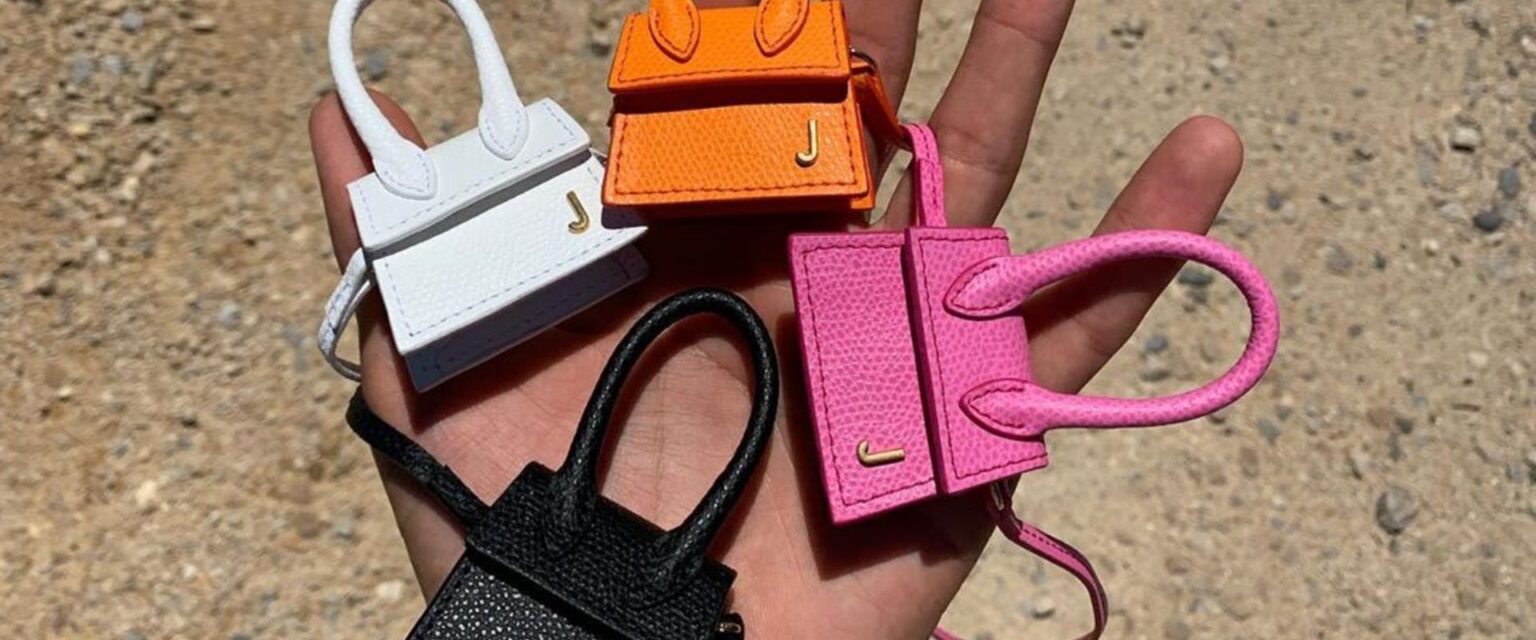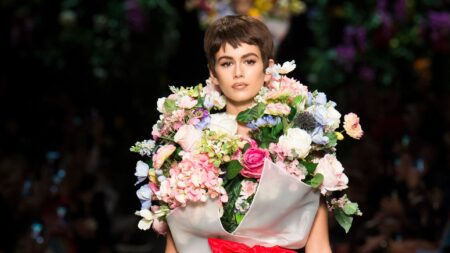“Called the Microscopic Handbag, Mschf’s itty-bitty bag is made of photopolymer resin that measures 657 by 222 by 700 micrometres. (For scale, that’s comparable to about a speck of dust.) The miniature bag is modelled after Louis Vuitton’s monogram OnTheGo handbag.” – Vogue
Let’s take a quick trip down the memory lane to look at the evolution of handbags over a century, from the 1920’s to the 2020’s.
1920’s
To formal occasions like weddings and dates, people typically brought small, elegant bags. Glitter, shimmer, and sparkle dominated the 1920s fashion business. The bags were also.
Mesh handbags were widely used. They had shells and silhouettes of fans, and they were little. The purses were not only eye candy but also arm candy because to their metallic hues and dense beadwork (beaded sequins or pearls). There were two handles that were used repeatedly: long, thin chains and circular or semicircular metal grips.
1930’s
Old Hollywood glitz gave rise to evening bags, now known as clutches, to complement the stunning evening gowns. The only place for bags was in women’s hands because no one wanted to wear a gown while carrying a bag on their shoulders. The traditional colours were tan, black, and white. Lighter hues were not used. Leather, crochet, and animal skin were the most often utilised materials.
1940’s
1940s clothes had a military vibe about it. Fashion had undoubtedly suffered as a result of World War II. There were fewer fabrics and supplies available to make garments since fashion firms had shuttered. Practicality prevailed because there were less materials available to make handbags using experimental techniques. Women transitioned from fancies to needs. Lifespan was the key concern. Large leather bags with long handles were created to transport all the necessities while men were away at war.
1950’s
The 1950s were a moment of thrilling, timeless classic fashion. The traditional bag shapes were replaced by unusual ones. As hexagonal bags became more fashionable, logos for luxury labels started to appear. To improve their appearance, scarves were knotted around the handles. The majority of the bags were basic colours and without any decorations. A stronger economy during the postwar era allowed people to shop in the luxury market.
1960’s
Small-handled purses, reptile skins, and prints were popular. The use of handbags has evolved into a status symbol. The emergence of young culture encouraged experimenting with various aesthetics that complemented feminine personality types.
The new interest was with geometrical, African, and tie-dye motifs. New materials including satin, vinyl, and brocade were well received. The Gucci Jackie purse, which was made famous in the 1960s and was named for Jackie Kennedy, had the shape of a crescent moon but was a little bigger. It had a piston closing and came with two straps
1970’s
In this decade, the hippie culture rose to prominence, during which time many eschewed the norm and pursued free-spirited lifestyles. The hippie aesthetic dominated 1970s fashion and encouraged everyone’s creative rebirth. As a result, this decade’s handbags had a bohemian design. Since hippies travelled about a lot, clothing had to be practical now. It was popular to carry cross-body bags with long chains or straps and tote bags with floral designs. Numerous pockets and zips were also frequently observed.
1980’s
Everything was excessive, from the garish colours and designs to the puffed shoulders and daring fabric choices. And handbag evolution followed suit. The focus was on maximalism. The classic Birkin bag, which was made famous by actress Jane Birkin, is now here. The first Birkin was a tote bag made of black leather. The fact that each bag is entirely handmade adds to its uniqueness and value. Due to its scarcity, it quickly became a prestige symbol and even today has a lengthy waiting list.
1990’s
People were discovering their minimalist sides at this period. As a result, the size of the purses shrunk along with this evolution. Elegant evening clutches gained attention. Clutch bags have gained popularity thanks to Lady Diana. These came in various lengths and were frequently made of silk. A quilted leather purse by Christian Dior caught the attention of the fashionable people thanks to Lady Diana. Later, in commemoration of the princess, it was given the name Lady Dior bag, which truly represents royalty.
2000’s
People began switching from daring fashion trends to more subdued ones at this point. Everyone was wearing athletics and casual clothing. Evidently, handbags had to follow fashion trends, therefore they increased in size and weight. Small bags disappeared, and large bags became a cult favourite. Additionally, women wanted to flaunt their edgy tomboyish side because they were sick of the “feminine” bags.
2010’s
I’m reminded of this decade by the inventive shapes that designers created, such as buckets, watermelon slices, and slender U-shaped bags. The fashion styles of the 2010s also show a strong influence from this time period, which prioritised fashion statements over functionality. Denim bags and unusual designs also gained popularity. The bag with side handles, which was an original concept, was the most adaptable. Women wanted to utilise bags as a simple item of clothing jewellery that complemented their clothes.
2020’s
Phone bags are getting more popular as phones have replaced all other items as a need for going out. Bags are no longer gender-specific due to the fluidity of fashion. The 2020s will be the decade in which you may effectively use fashion as your canvas and use it to show off both your inner skills and social impact.













